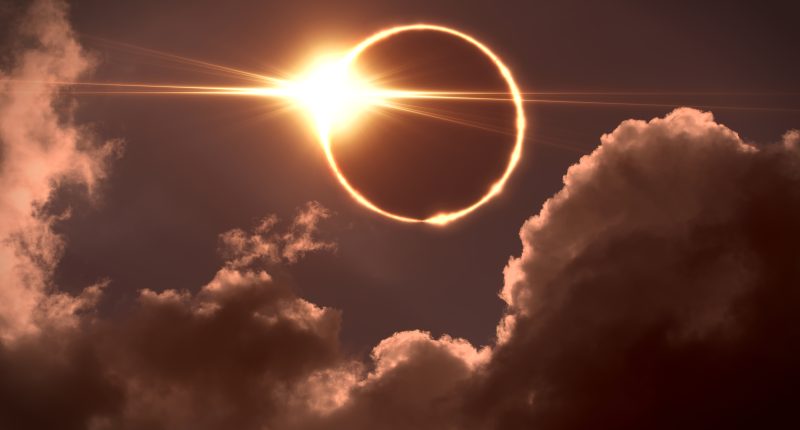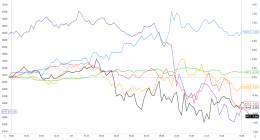A RARE total eclipse is to appear in the skies over North America next week, with parts of the UK and Northern Ireland catching a partial glimpse.
Here is when – and how – you can watch bucket-list-worthy event yourself.
What is a solar eclipse?
A solar eclipse occurs when the Moon passes between the Sun and Earth.
It casts a shadow on Earth that either fully or partially blocks the Sun’s light in some areas, resulting in either a total or partial eclipse.
Read The Sun’s full solar eclipse explainer here.
How long will the eclipse last?
The upcoming solar eclipse on 8 April will be roughly twice as long as the total solar eclipse in August 2017.
READ MORE ON THE SOLAR ECLIPSE
This eclipse is expected to cast total darkness across parts of the US for up to four minutes and 28 seconds.
Parts of the UK and Northern Ireland will catch a glimpse of a partial eclipse for the same amount of time.
When was the last solar eclipse?
The last total solar eclipse in the US happened in 2017, and was dubbed the ‘Great American Eclipse’ at the time.
On the other side of the Atlantic, in 1999, the UK witnessed its last total solar eclipse.
Most read in Science
Several partial solar eclipse events have occurred since then.
Where will you be able to see the solar eclipse?
North America
The rare event will be mostly enjoyed in the US, where a total solar eclipse will be visible for several minutes from around 11:07am PDT.
It will begin on Mexico’s Pacific coast and travel through Oklahoma, Arkansas, Missouri, Illinois, Kentucky, Indiana, Ohio, Pennsylvania, New York, Vermont, New Hampshire, and Maine.
According to Nasa, small parts of Tennessee and Michigan will also experience the total solar eclipse.
Then the rare display will head into Canada through Southern Ontario, and continue through Quebec, New Brunswick, Prince Edward Island, and Cape Breton.
The eclipse is forecast to exit North America on the Atlantic coast of Newfoundland, Canada, at 5:16 pm NDT.
Nasa has more information on the exact times you will be able to see the total eclipse in your nearest city here.
UK and Northern Ireland
The UK and Ireland unfortunately won’t experience totality when it comes to this eclipse.
And some parts of the UK won’t see anything different at all.
The amount of eclipse seen will vary by location, however, Wales, Scotland, northwest of England and the deep southwest will have the best luck.
The whole of Northern Ireland and the Republic of Ireland will also see the partial eclipse.
As the sun sets, the partial eclipse will appear in these regions at approximately 7:54pm GMT.
The Sky Live has more information on the exact times you will be able to catch the partial eclipse in your area here.
How can I watch the solar eclipse safely?
Onlookers must always observe a solar eclipse caution.
You should never look directly at the sun without proper eye protection, which includes:
- Eclipse glasses
- Solar filters
- Solar telescope
Everyone across North America will need to wear eclipse glasses or use solar filters to safely view this event – even through cameras or binoculars.
Cameras and binoculars should only be used with solar filters during the partial phases.
You’ll need to remove the solar filters during totality if you want to capture the corona on camera.
But you must keep an eye on the time so you know when the sun is about to remerge, otherwise it could damage your camera and your eyes.
READ MORE SUN STORIES
Please note: Only buy eclipse glasses and solar filters from trusted sources, as there are reports of fake and poorly made flooding the internet ahead of the 8 April event.
When is the next total solar eclipse?
The next total eclipse in Europe will occur on 12 August 2026 across Greenland, Iceland and northern Spain.
Find out more about science
Want to know more about the weird and wonderful world of science? From the Moon to the human body, we have you covered…
This post first appeared on Thesun.co.uk










